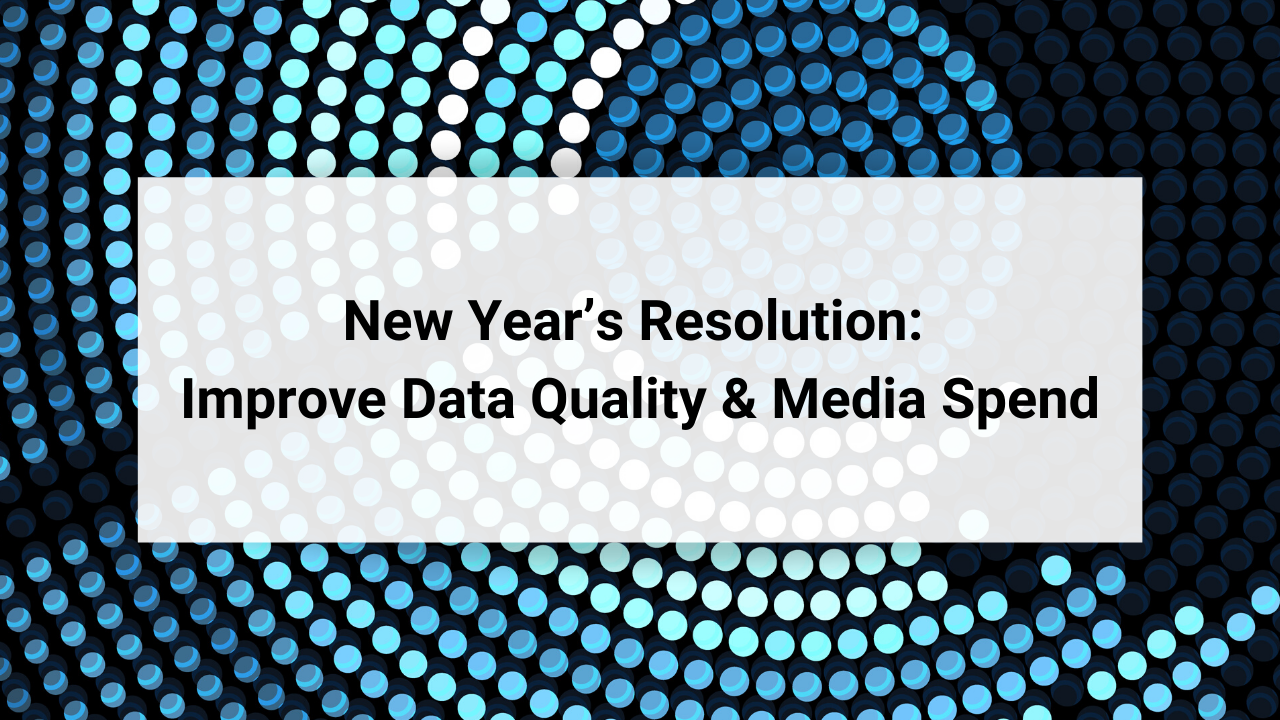
Wouldn’t it be nice to start the new year by tackling your digital media waste?
In an age when marketers need more than ever to justify spend and account for results, it's estimated that 40% of digital media spend is ineffective*. The first place to look for incremental value is in your data. With a greater focus on data quality, control, and transparency, you can gain back that wasted portion of your marketing budget, thus increasing marketing ROI and driving marketing performance.
Bad data costs money.
The impact of bad data is staggering and can cost a business millions of dollars. The loss of revenue comes in large part from wasted resources, in terms of both money and employee work hours. Not only can bad data result in useless marketing spend, but correcting the errors in bad data takes time—time that is required from many departments and many individuals, from management down to marketing analysts, media planners, and related stakeholders.
The hidden costs of bad data may be even greater, negatively impacting the company’s reputation, resulting in lost prospects, leads, and sales, as well as poor strategic decisions made as a result of incorrect information.
Common causes of bad data and how to fix them.
The four most common causes of poor marketing data quality are listed below. Fix these and you’ll drive maximum value from each data point.
1. Technology Implementation
Even if you’ve bought into the latest and greatest shiny new MarTech , technology doesn’t just happen on its own. If it’s set up improperly or business rules are not well understood, it can lead to myriad issues that skew performance. Seemingly trivial issues—such as a tag not firing, a website loading too slowly, or parameters not passing through from one system to another—can lead to major data problems. You want to be sure the low conversion rates you see in reporting are actually due to media placement or creative messaging, and not because someone forgot to add a tag.
The key is to have control over your data and technology regardless of whether it is managed in house or through agency partners. Have someone audit your tech setup to be sure that the intended data is being generated from the very beginning.
2. Data Governance
Media tracking and proper use of naming conventions may not get many marketers excited, but they are critical for efficient operations. Most marketers concentrate on bringing in raw data and cleaning it up later, but that results in lost time and energy trying to clean up your data before you get meaningful results. Establishing and monitoring global naming conventions is critical to have an accurate and complete understanding of the data you’re collecting. The key is to manage a balance between flexibility and data governance to drive operational efficiency. (More on this in our next blog post…)
3. Stakeholder Engagement
Making technology work so that you get the most out of your data requires a coordinated engagement between multiple stakeholders within and outside your organization. The chain is only as strong as its weakest link.
Make sure to have the commitment of senior leaders within your organization before embarking on this journey because it requires a fundamental change in behavior to be successful. Educate stakeholders throughout the data value chain on what’s required to deliver results. Demonstrate value.
Becoming an effective data-driven organization is not about more work. It’s about a different, more efficient way of working.
4. Manual Intervention
The more human interactions, the greater the risk of error. Whether it’s manual data collection, reporting, or connecting and reconciling data, the more human touch-points, the greater the chance of error. When media agencies and marketing organizations have high employee turnover, the problem becomes even worse, because the people are not consistent, processes are not standardized, and knowledge is not retained.
There is definitely an investment and strategy required to consistently produce great data, but the rewards far outweigh the costs and effort involved. In order to get meaningful marketing results data, you need to think up front about how you want to be able to cut your data for downstream reporting and analytics. With the technology available today, there is no reason not to centralize and transform your data for greater visibility and automation, particularly for repetitive tasks or campaign performance reports. That’s why many marketers are turning to specialized companies with the right set of tools and skills to help them.
Improve your ROI with better data quality.
A data-quality assessment and ongoing scorecard can help you identify and focus on where your data needs to be improved, and subsequently, where resources need to be deployed. The results may be painful to see, but they also indicate tremendous opportunities for savings and growth. You won’t be able to improve your company’s performance until you understand what you’re doing wrong.
At MSIGHTS, we have developed a Data Quality Assessment Process to help our clients improve their data quality and recover wasted media spend. If you’re ready to determine which aspects of your marketing data are wasting your budget, contact us. Let’s make 2020 the year you reclaim lost marketing dollars.





 Sign In
Sign In




